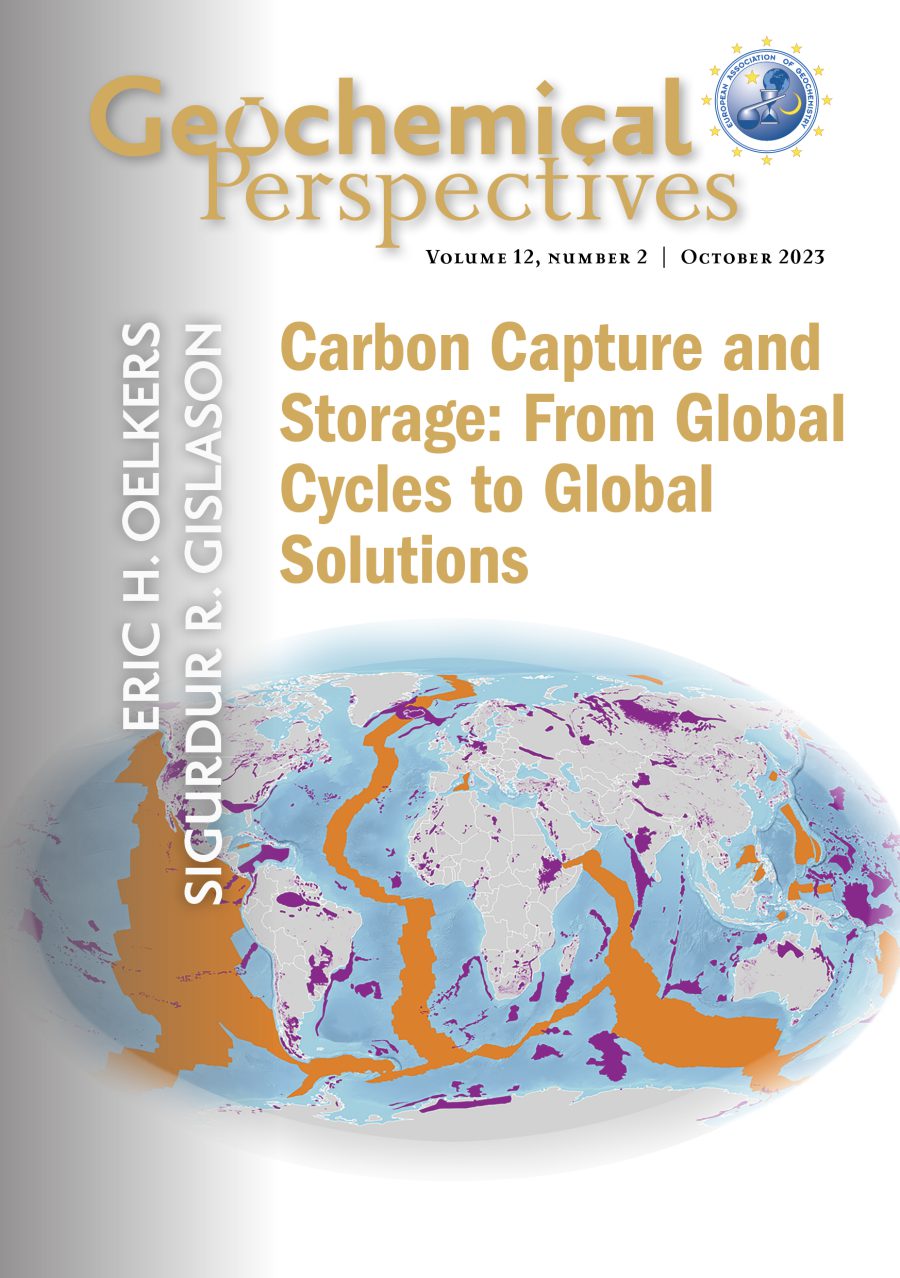
Carbon Capture and Storage: From Global Cycles to Global Solutions
by Eric H. Oelkers1 and Sigurdur R. Gislason1doi: 10.7185/geochempersp.12.2 | Volume 12, Number 2 (pages 179-349)
A Comment and Reply to Comment were published on 14 June 2024.
Comment by Sævar Freyr Þráinsson | doi: 10.7185/geochempersp.12.3
Reply to Comment by Eric H. Oelkers and Sigurdur R. Gislason | doi: 10.7185/geochempersp.12.4
Abstract
Anthropogenic carbon emissions have overwhelmed the natural carbon cycle, leading to a dramatic increase in atmospheric CO2 concentration. The rate of this increase may be unprecedented in Earth’s history and is leading to a substantial increase in global temperatures, ocean acidification, sea level rise and potentially human health challenges. In this Geochemical Perspectives we review the natural carbon cycle and its link to global climate. Notably, as directly observed by field observations summarised in this volume, there is a natural negative feedback loop between increasing global temperature, continental weathering rates, and CO2 that has tended to limit Earth climate changes over geological time scales.
Due to the rapid increase in atmospheric carbon concentrations, global average temperatures have increased by more than 1.2 °C since the start of the industrial revolution. One way to slow or even arrest this increasing global average temperature is through Carbon Capture and Storage (CCS). Carbon dioxide can be captured either from large industrial point sources or directly from the atmosphere. Taking account of the natural carbon cycle, the most secure approach to storing captured CO2 is by reacting it with mafic or ultramafic rocks to form stable carbonate minerals, a process referred to as “mineral carbonation”. Although mineral carbonation can occur and be accelerated at the Earth’s surface, due to the required scale and required time frames it is most effective in the subsurface. This subsurface mineralisation approach was developed into an industrial scale process through an academic-industrial collaboration called CarbFix. The history of CarbFix, from its beginnings as a concept through its installation as an industrial process is presented in detail.
This Geochemical Perspectives concludes with an assessment of the future of subsurface mineralisation as a means to help address the global warming challenge, as well as a detailed list of potential research directions that need to be addressed to further upscale and optimise this carbon storage approach.

